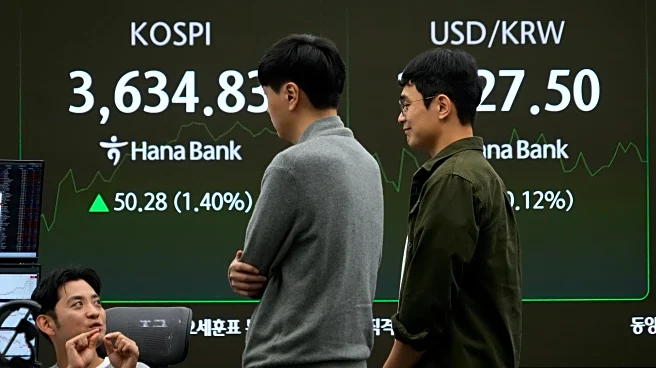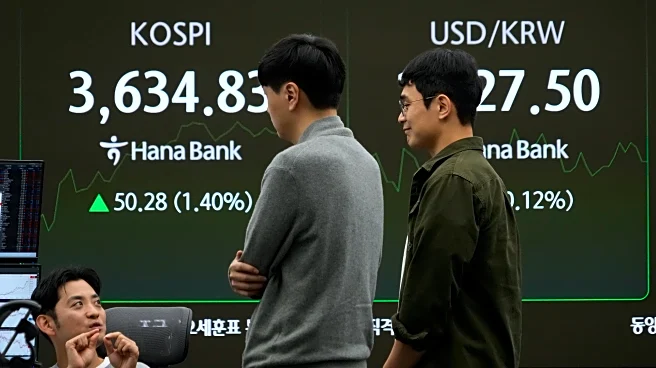What's Happening?
Amid persistent macroeconomic uncertainty, options trading strategies are being recommended to hedge against potential market downturns. The S&P 500 has seen a recent pullback, prompting investors to consider put spreads as a cost-effective way to protect equity exposure. Despite elevated volatility levels, portfolio insurance remains relatively affordable. The volatility skew, which measures the difference between implied volatility on out-of-the-money puts and at-the-money options, is high, making vertical put spreads an efficient choice. This strategy allows investors to hedge against further declines while minimizing upfront costs.
Why It's Important?
The current macroeconomic environment, characterized by U.S.-China trade tensions and high real yields, poses risks to market stability. Options trading strategies like put spreads offer investors a way to manage these risks without incurring significant costs. This approach is particularly relevant for investors concerned about potential earnings disappointments or economic slowdowns. By utilizing these strategies, investors can protect their portfolios from significant losses, ensuring financial resilience in uncertain times. The focus on efficient capital use highlights the importance of strategic financial planning in volatile markets.
What's Next?
Investors will continue to monitor macroeconomic indicators, such as trade negotiations and Federal Reserve policies, to assess market conditions. The upcoming earnings season will be crucial in determining corporate health and economic trends. Any negative surprises could trigger further market corrections, emphasizing the need for effective hedging strategies. As the market navigates these uncertainties, options trading will remain a key tool for managing risk and optimizing investment outcomes.













